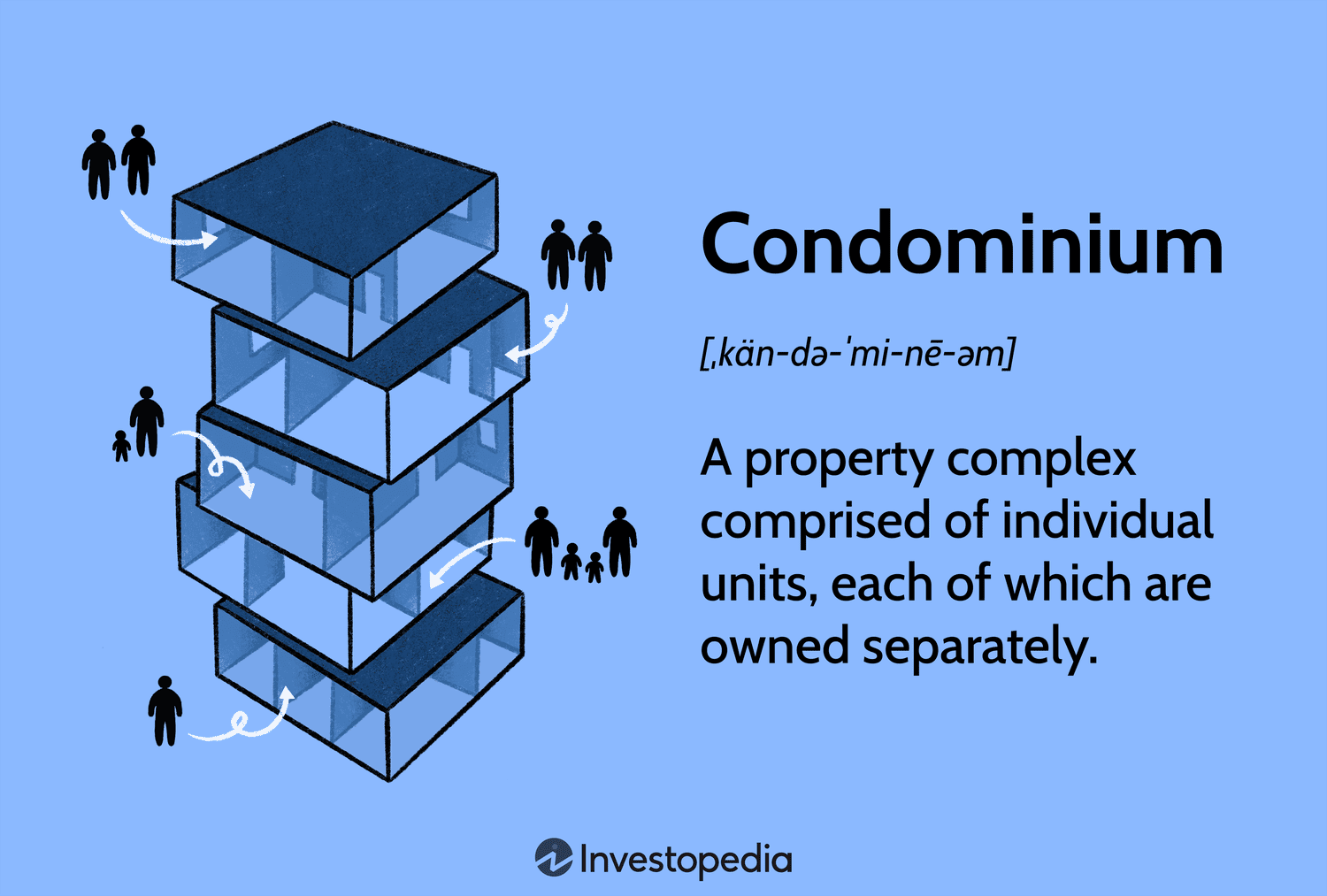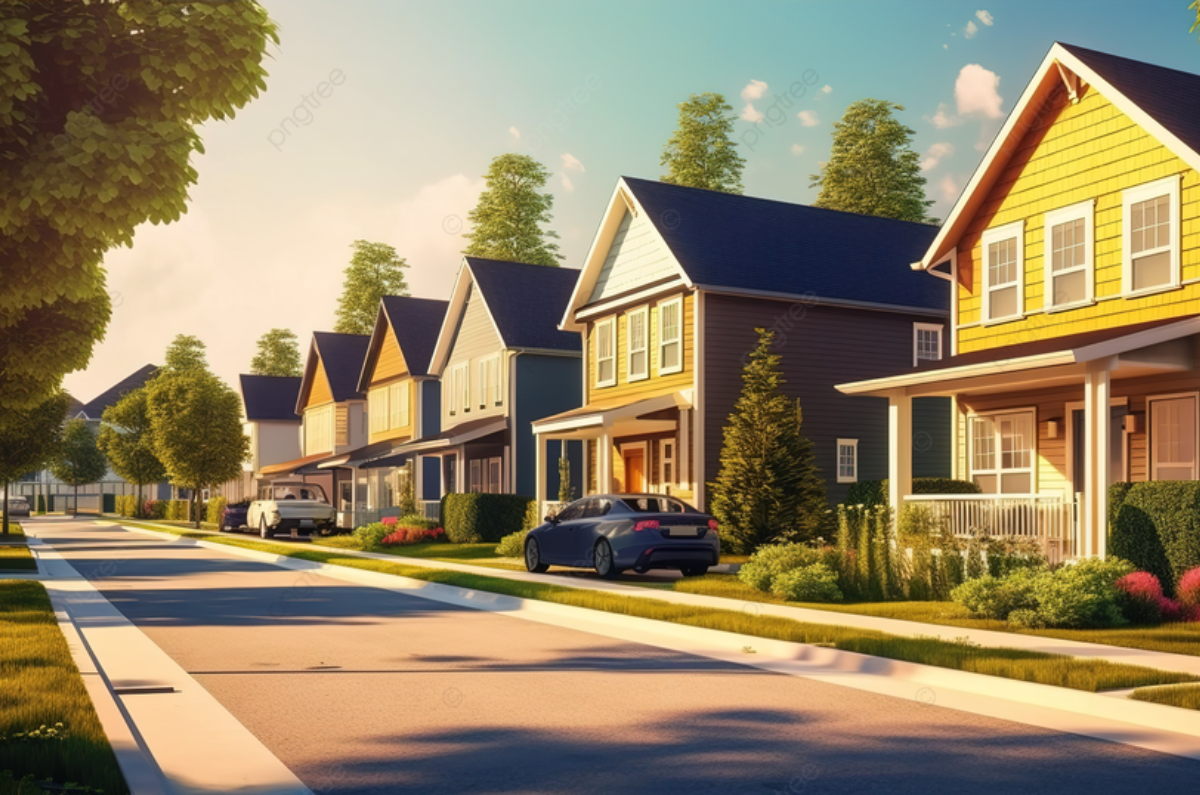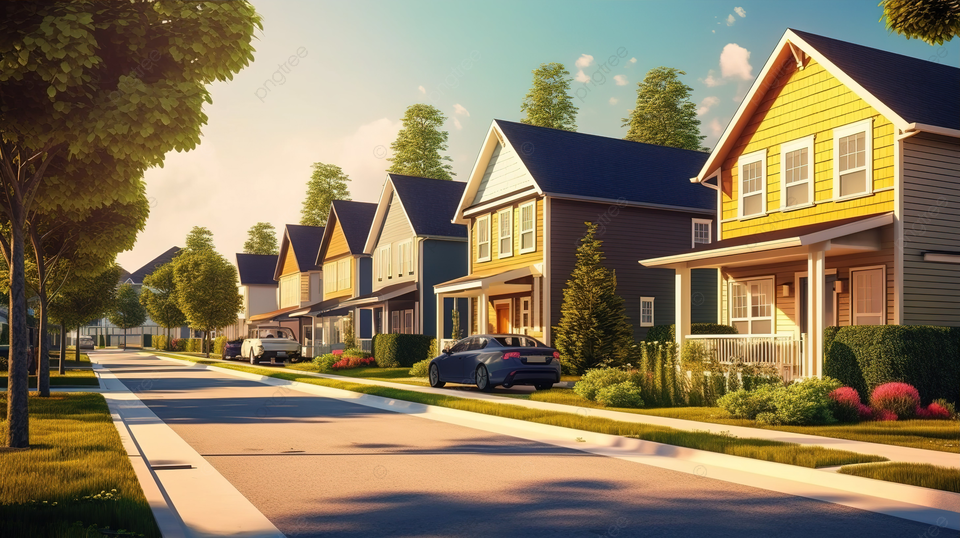Investing in real estate offers a myriad of opportunities for individuals seeking to grow their wealth and secure their financial future. From residential properties to commercial complexes, the real estate market is vast and varied, catering to different investment preferences and objectives. In this article, we will explore the five main types of real estate investments and delve into the characteristics, advantages, and considerations associated with each.
1. Residential Real Estate
 Introduction to Residential Real Estate
Introduction to Residential Real Estate
Residential real estate is a fundamental aspect of the housing market, encompassing properties designed for personal occupancy. From cozy single-family homes to luxurious condominiums and trendy apartments, residential real estate offers diverse housing options to meet the needs and preferences of individuals and families.
Types of Residential Real Estate Properties
Within the realm of residential real estate, several property types cater to different lifestyles and preferences. Single-family homes remain a popular choice for homeowners seeking privacy and space, while condominiums offer a blend of ownership and convenience. Apartments provide rental options for urban dwellers, while townhouses offer a balance of community living and individual ownership.
Key Factors Influencing Residential Real Estate
Several key factors influence the attractiveness and value of residential real estate properties. Location plays a pivotal role, with proximity to schools, employment centers, amenities, and transportation hubs driving demand and property prices. Affordability is another critical consideration, with housing costs relative to income levels shaping affordability and accessibility for homebuyers.
Challenges and Opportunities
Despite the opportunities, residential real estate also presents challenges. Housing affordability remains a pressing issue in many markets, driven by rising property prices and stagnant wage growth. Market volatility, regulatory changes, and economic uncertainties also pose challenges for buyers, sellers, and investors. However, these challenges also create opportunities for innovation and adaptation, such as the rise of affordable housing initiatives and alternative financing options.
Future Trends in Residential Real Estate
Looking ahead, several emerging trends are poised to shape the future of residential real estate. Sustainable living practices, including energy-efficient design, renewable energy sources, and green building materials, are gaining traction among environmentally conscious buyers. Smart home technology, such as home automation systems and Internet of Things (IoT) devices, promises to enhance convenience, security, and energy efficiency in residential properties. Co-living spaces, which promote communal living arrangements and shared amenities, offer a unique housing solution for young professionals and urban dwellers seeking affordability and social connections.
2. Commercial Real Estate

Introduction to Commercial Real Estate
Commercial real estate forms a vital sector within the broader real estate industry, encompassing a diverse range of properties used for business and income-generating purposes. From bustling retail centers to towering office buildings, commercial real estate plays a pivotal role in shaping urban landscapes and driving economic growth.
Types of Commercial Real Estate Properties
In the realm of commercial real estate, various property types cater to distinct business needs and industries. Retail properties, including shopping malls and standalone stores, serve as hubs for consumer activity and commerce. Office buildings provide workspace for businesses of all sizes, while industrial facilities support manufacturing, storage, and distribution operations. Hospitality properties, such as hotels and resorts, offer accommodations and amenities for travelers, while multifamily residential complexes provide housing solutions for individuals and families.
Key Factors Driving Success in Commercial Real Estate
Several key factors contribute to the success and desirability of commercial real estate properties. Location plays a crucial role, with prime locations offering high visibility, accessibility, and proximity to amenities driving higher demand and property values. A diverse tenant mix comprising reputable businesses and industry leaders fosters stability and long-term occupancy, while well-maintained properties with modern amenities command higher rental rates and appeal to discerning tenants.
Challenges and Opportunities
Despite the opportunities, commercial real estate also presents challenges. Market volatility, tenant turnover, and regulatory compliance are key considerations for investors and developers. However, with these challenges come opportunities for innovation and adaptation. Proactive risk management strategies, effective leasing, and tenant retention efforts, and a focus on compliance and sustainability can mitigate risks and unlock new growth opportunities.
Future Trends and Innovations
Looking ahead, several emerging trends and innovations are poised to shape the future of commercial real estate. Technology integration, including smart building systems and data analytics, promises to enhance operational efficiency and tenant experiences. The rise of flexible workspaces and sustainable development practices reflects changing work and lifestyle preferences, while advances in sustainability initiatives and green building practices underscore a growing emphasis on environmental responsibility.
3. Industrial Real Estate

Introduction
In the realm of real estate, industrial real estate stands as a cornerstone of economic development and infrastructure. we specialize in navigating the complexities of this dynamic sector, offering unparalleled expertise and solutions to clients seeking to capitalize on industrial opportunities.
Defining Industrial Real Estate
Industrial real estate comprises properties specifically designed and utilized for industrial purposes, including manufacturing, distribution, storage, and logistics operations. These properties encompass a diverse range of facilities, such as warehouses, distribution centers, manufacturing plants, industrial parks, and flex spaces.
Understanding the Components
Within the realm of industrial real estate, several key components contribute to its diversity and functionality:
Warehouses: These facilities serve as storage spaces for inventory, raw materials, and finished goods, playing a critical role in supply chain management and distribution logistics.
Distribution Centers: Strategically located hubs for the efficient distribution and transportation of goods, distribution centers facilitate the movement of products from manufacturers to retailers and end consumers.
Manufacturing Plants: Facilities equipped with machinery and equipment for the production of goods, manufacturing plants are essential for various industries, from automotive and aerospace to pharmaceuticals and consumer goods.
Industrial Parks: Planned developments housing multiple industrial facilities, industrial parks offer a conducive environment for businesses to operate and collaborate within a centralized location.
Key Factors Driving Success
Several factors contribute to the success and desirability of industrial real estate:
Location: Proximity to transportation hubs, major highways, ports, and airports is crucial for optimizing logistics and ensuring efficient distribution networks.
Infrastructure: Adequate infrastructure, including utilities, roads, and telecommunications, is essential to support the operations of industrial tenants and facilitate business growth.
Accessibility: Easy access to labor pools, skilled workers, and workforce training programs enhances the attractiveness of industrial properties for tenants and investors.
Technological Advancements: Embracing technology solutions such as automation, robotics, and data analytics improves operational efficiency, productivity, and competitiveness in the industrial sector.
Challenges and Opportunities
While industrial real estate presents lucrative opportunities for investors and developers, it also comes with its share of challenges:
Supply Chain Disruptions: Global events, natural disasters, and geopolitical factors can disrupt supply chains and impact industrial operations, necessitating robust risk management strategies.
E-commerce Growth: The rapid growth of e-commerce has increased demand for industrial properties, particularly last-mile distribution centers and fulfillment centers, presenting opportunities for investment and development.
Environmental Regulations: Compliance with environmental regulations and sustainability standards is increasingly important for industrial properties, driving demand for eco-friendly and energy-efficient facilities.
Future Trends and Innovations
Looking ahead, several trends and innovations are poised to shape the future of industrial real estate:
Smart Manufacturing: The integration of Internet of Things (IoT) technology and data analytics enables predictive maintenance, real-time monitoring, and optimization of manufacturing processes.
E-commerce Expansion: Continued growth in e-commerce is expected to drive demand for industrial properties, prompting developers to invest in innovative solutions such as multi-story warehouses and automated fulfillment centers.
Sustainable Development: Green building practices, renewable energy sources, and carbon-neutral initiatives are gaining traction in the industrial sector, driven by investor demand for sustainable and socially responsible properties.
4. Retail Real Estate

Introduction
In the realm of real estate, retail real estate stands as a pivotal player, serving as the foundation for vibrant commercial landscapes and thriving economic ecosystems. we pride ourselves on our expertise in navigating the intricate nuances of this dynamic sector, delivering unparalleled insights and solutions to our clients.
Defining Retail Real Estate
Retail real estate encompasses a diverse array of properties specifically tailored for retail operations. These properties range from expansive shopping malls and bustling retail centers to quaint storefronts nestled along busy streets. The primary objective of retail real estate is to provide a conducive environment for retailers to showcase their products or services and engage with customers directly.
Understanding the Components
Within the realm of retail real estate, various components contribute to its vibrant tapestry:
Shopping Malls: These sprawling complexes feature a mix of retail stores, restaurants, entertainment venues, and often anchor tenants such as department stores or supermarkets.
Retail Centers: Smaller in scale compared to shopping malls, retail centers typically house a curated selection of stores and eateries, catering to the needs and preferences of local communities.
Standalone Retail Stores: These independent storefronts range from boutique shops to flagship stores of well-known brands, each offering a unique shopping experience to patrons.
Mixed-Use Developments: Increasingly popular, mixed-use developments seamlessly blend retail spaces with residential, commercial, and recreational elements, fostering vibrant, live-work-play environments.
Key Factors Driving Success
Several factors contribute to the success and desirability of retail real estate:
Location: A prime location with high visibility, accessibility, and foot traffic is paramount for the success of retail properties.
Tenant Mix: A diverse and complementary mix of tenants enhances the shopping experience and attracts a broader customer base.
Amenities and Services: Access to amenities such as ample parking, dining options, entertainment facilities, and convenient services enriches the overall appeal of retail destinations.
Technology Integration: Embracing technology solutions such as online ordering, click-and-collect services, and immersive shopping experiences enhances convenience and engagement for modern consumers.
Challenges and Opportunities
While retail real estate presents immense opportunities for investors and developers, it also comes with its fair share of challenges:
E-commerce Disruption: The rise of e-commerce has reshaped consumer shopping habits, challenging traditional brick-and-mortar retailers and necessitating innovative strategies to remain competitive.
Adaptability: Retailers and property owners must continually adapt to evolving consumer preferences, market trends, and technological advancements to stay relevant and profitable.
Community Engagement: Establishing strong connections with local communities through events, promotions, and initiatives is crucial for fostering loyalty and sustaining long-term success.
Future Trends and Innovations
Looking ahead, several trends and innovations are poised to shape the future of retail real estate:
Experiential Retail: Emphasizing experiences over transactions, experiential retail concepts such as pop-up shops, immersive installations, and interactive displays captivate consumers and drive foot traffic.
Sustainability: Increasing awareness of environmental sustainability prompts retailers and developers to embrace eco-friendly practices and design features, from energy-efficient buildings to sustainable sourcing and waste reduction initiatives.
Omni-channel Retailing: The integration of online and offline channels enables retailers to offer seamless shopping experiences across multiple touchpoints, blurring the lines between digital and physical retail environments.
5. Mixed-Use Real Estate

Introduction
In the realm of real estate, mixed-use developments stand as veritable symbols of versatility and innovation. These multifaceted projects seamlessly integrate different types of properties within a single development, offering a diverse array of residential, commercial, retail, and recreational spaces. we pride ourselves on our expertise in conceptualizing and executing mixed-use projects that redefine urban living and set new standards for sustainability, connectivity, and livability.
Defining Mixed-Use Real Estate
Mixed-use real estate encompasses developments that incorporate multiple types of properties, such as residential units, office spaces, retail stores, and entertainment venues, within a single project. Unlike traditional single-use developments, which focus on a singular purpose, mixed-use projects are designed to create dynamic, integrated communities where residents, workers, and visitors can live, work, and play nearby.
Benefits of Mixed-Use Development
1. Urban Revitalization: Mixed-use developments play a pivotal role in revitalizing urban areas by leveraging available land parcels more efficiently and creating vibrant, multifunctional communities.
2. Synergistic Spaces: By combining different types of properties within the same development, mixed-use projects foster synergies between residential, commercial, and retail spaces, enhancing convenience and accessibility for residents and visitors alike.
3. Economic Viability: Mixed-use developments offer a diverse range of revenue streams, making them economically resilient and less susceptible to market fluctuations compared to single-use projects.
4. Enhanced Connectivity: Emphasizing connectivity and accessibility, mixed-use developments prioritize pedestrian-friendly infrastructure, public transportation options, and smart urban planning principles to promote sustainable mobility.
5. Future-Focused Innovation: As the real estate industry evolves, mixed-use developments continue to innovate by incorporating cutting-edge technology, sustainability features, and flexible-use spaces to meet the evolving needs of residents and tenants.
Case Study: The Success of XYZ Mixed-Use Development
To illustrate the impact of mixed-use developments, let’s examine the success story of XYZ Mixed-Use Development. Located in the heart of downtown, XYZ combines luxury residential apartments, Class-A office spaces, upscale retail outlets, and recreational amenities in a modern, architecturally striking complex.
Conclusion
In conclusion, the real estate market offers a spectrum of investment opportunities across various property types. Whether investing in residential, commercial, industrial, retail, or mixed-use properties, investors need to conduct thorough research, assess risk factors, and align their investment strategies with their financial goals. By understanding the nuances of each real estate sector and adopting a disciplined investment approach, individuals can capitalize on the wealth-building potential of real estate.

FAQs:
Is real estate investment suitable for beginners?
Answer: Yes, real estate investment can be suitable for beginners, but it requires thorough research and financial planning to minimize risks and maximize returns.
What are some common challenges associated with real estate investment?
Answer: Common challenges include property management, market fluctuations, tenant turnover, regulatory compliance, and financing issues.
How can investors finance real estate investments?
Answer: Investors can finance real estate investments through various methods, including conventional mortgages, private loans, partnerships, and real estate crowdfunding platforms.
Are there any tax benefits associated with real estate investment?
Answer: Yes, real estate investors may be eligible for tax deductions on mortgage interest, property taxes, depreciation, and expenses related to property maintenance and improvement.
What are some strategies for mitigating risks in real estate investment?
Answer: Strategies include diversifying your portfolio, conducting thorough due diligence, maintaining adequate cash reserves, investing in stable markets, and staying informed about industry trends and regulatory changes.
NAPS can refer to various things depending on the context:
National Association for the Prevention of Starvation: An organization dedicated to addressing food insecurity and famine globally.
Network Access Point: In the realm of computer networking, it’s a major hub that connects Internet Service Providers (ISPs) and facilitates the exchange of data between them.
North American Power Symposium: A conference or gathering focusing on power systems and energy-related topics, often attended by professionals and researchers in the field.
Narcolepsy: A neurological disorder characterized by excessive daytime sleepiness and sudden attacks of sleep (narcoleptic episodes).
what is PMAY?
PMAY stands for Pradhan Mantri Awas Yojana, which is a flagship affordable housing scheme launched by the Government of India. The aim of PMAY is to provide affordable housing to all eligible beneficiaries by the year 2022. It targets economically weaker sections (EWS), low-income groups (LIG), and middle-income groups (MIG) in both urban and rural areas. PMAY offers financial assistance through credit-linked subsidies, beneficiary-led construction, and affordable housing projects to enable eligible individuals to own a house. The scheme also focuses on promoting sustainable and inclusive urban development by providing infrastructure facilities in housing colonies.

